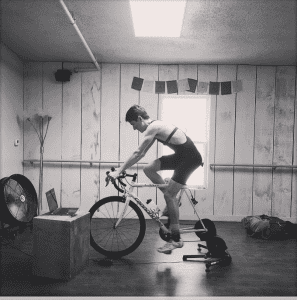This is a post summarizing evidence and decision making guidance related to Low Air Quality, Pollution and Wild-Fires. It includes handy links.
Please let us know if information on this page becomes outdated or if there are additional valuable links/concepts to help athletes like you!
What is Air Pollution
“Air pollution is a mixture of chemical, physical and biological agents that contaminate indoor and outdoor environments (WHO, 2022b). In Canada, the highest emissions of air pollutants have been linked to electricity generation, construction, oil and gas industries, forest fires, transportation, agriculture and wood burning (GoC, 2022b). Some of the most harmful air pollutants to human health include particulate matter (PM), ground-level ozone (O3), nitrogen dioxide (NO2), volatile organic compounds (VOCs) and sulphur dioxide (SO2; GoC, 2022b). Below is a summary of each of these key pollutants.” SIRC 2022
Air Quality Health Index ( AQHI ) and Air Quality Index (AQI)
- Air Quality Health Index from Canada.ca https://www.canada.ca/en/environment-climate-change/services/air-quality-health-index/use.html
- In the USA there is a different scale called AQI that uses a scale from 0-301+ where anything over 100-150 (orange to red) is becoming unhealthy. Great info from city of Boulder – https://bouldercolorado.gov/services/air-quality and AirNow.gov
Decision Making for Exercise and Competition during low air quality (e.g. wild fires)
-
When the health risk is low (AQHI 1 to 3), it is the optimum time to schedule and participate in outdoor sport and physical activities.
-
When the health risk is moderate (AQHI 4 to 6), outdoor activities may still be held. However, particular attention should be given to participants with pre-existing medical conditions such as asthma.
-
When the health risk is high (AQHI 7 or above), outdoor events should be cancelled, re-scheduled, or moved to an indoor location whenever possible.
Making a personal choice given your risks and goals
A personal choice is, well, personal! Thinking about what your goal is and how it weighs against the short and long term risks is important especially if choosing to bend or ignoring the general guidelines. While missing a race or training session can be difficult it is often smart to choose the surest path to long term health and long term training consistency. One hard workout that leaves you coughing for days or unable to train.
- Those with with pre-existing conditions, especially respiratory conditions such as Asthma would want to be more careful not to further aggravate their conditions or end up in distress.
- If your training or racing occurs in remote areas or in situations where help is further away (e.g. solo, in the wilderness, or FKT). Think of ways to reduce the risk/exposure in these cases where things could go very badly.
- If your goal is not immediate and you have lots of time there is not much consequence to reducing load or missing a few days of training or a low priority race. In this case the benefit is much lower than the risk.
- If you have an upcoming important race than you might choose to avoid lower priority races or high-risk training environments to avoid issues ahead of competition.
Symptoms to Watch for
- Less serious symptoms to watch out for include headache, eye and throat irritation are all common and things to watch out for and would indicate you should head indoors and seek care. (LINK)
- More serious symptoms are ones that involve changes to breathing, heart rate or consciousness. These include dizziness, chest pains, serious coughs, irregular heart rate or palpitations (LINK)
Training Strategies to Maintain Consistency (and health!)
-
Depending on the reason for the poor air quality it is possible to train at different times of day and/or to go to a different area (sometimes a short drive can make a big difference). Use forecasts and local reports. ( eg. travel away from urban areas or wild fires. Observe wind patterns) . This is a Ontario cities forecast of AQHI And this FireSmoke.Ca Map forecasts 2-3 days
-
Train indoors or partially indoors (e.g. do intensity indoors)
- Consider adding an air-purifier to your home – Link to Canada.ca
- As a Consummate Athlete you likely have the ability and/or desire to do different sports. Consider strength training, swimming or group activities (e.g. fitness class) to adapt to your environment. Resist the urge to match your training plan identically as your context changes.
- Indoor Ride Duration – If a ride moves indoor we generally keep the duration under 90minutes
- Indoor Ride intensity – If a ride moves indoors remember that indoor cycling is different and often different wattage/feeling.
- Discuss best strategies for you and your goals with your coach or book a phone consultation if you need help!
Reducing Exposure during rest of day and are Masks effective against pollution and wild-fire
While not perfect, masks can help reduce your exposure during periods of low air quality. Wearing a well-fitted mask (e.g. N95) is thought to help reduce total exposure. Consider during non-activity time and/or at lower intensity ( see here , here and here ) . If you do exercise outside than it seems logical to try to reduce exposure during the rest of your day by wearing a mask and/or staying indoors if possible.
Watching Forecasts
- This Firesmoke.ca Map is really neat (and scary) forecasts 2-3 days ahead for smoke levels in USA and Canada
- https://weather.gc.ca/canada_e.html
- Ontario cities forecast of AQHI
- There is an AQHI app on Google and Iphone
- AIRNOW.GOV to check USA air quality by Zip Code
Further Reading
- SIRC – Clearing the Air around Air Quality – MANY great resources https://weather.gc.ca/canada_e.html
- SIRC – infographic for decision making during poor air quality https://sirc.ca/air-quality-and-sport/






